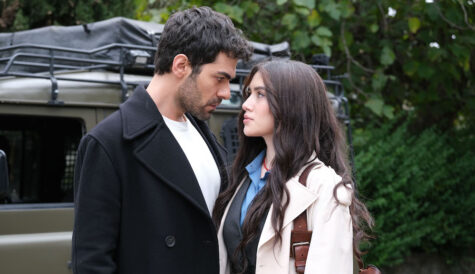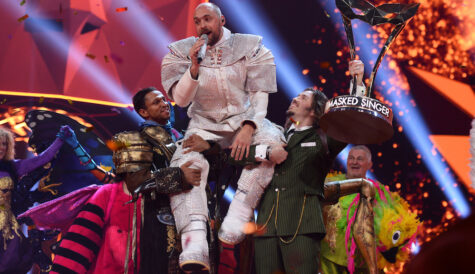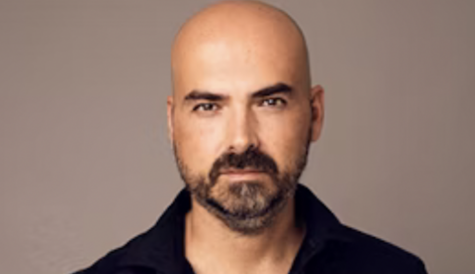Vince Gilligan, creator, Breaking Bad
The 1980s Texas oil soap Dallas is an unlikely source of inspiration for critically acclaimed cable drama Breaking Bad. But Vince Gilligan, the man who created the Emmy award winning AMC series, believes Larry Hagman’s JR Ewing paved the way for some of the most exciting drama series in recent years including The Sopranos and The Shield and, by extension, Breaking Bad.
“I think that Dallas showed at an early stage in US television, that people could root for the bad guy,” Gilligan says.
Walter White, played by Bryan Cranston, an actor who was best known as the dad in sitcom Malcom in the Middle, is Gilligan’s bad guy, or more precisely his anti-hero.
White is a high school chemistry teacher who turns to cooking crystal meth after he is diagnosed with terminal cancer. He teams with a local dropout and former student Jesse Pinkman, played by Aaron Paul, to set up a mobile meth lab in order to financially provide for his family.
“We started out with an everyman who means well and as the show progresses he willfully decides to be something different. The protagonist becomes the antagonist,” says Gilligan. “I thought it would be fun to create a show with the most extreme example of a man that goes bad. When I pitched it to AMC, I said we’re going to take Mr. Chips and turn him into Scarface.”
This pitch was, somewhat surprisingly, snapped up by AMC, a channel that was previously known for airing classic movies and was only just beginning to get into the original programming game, having aired Robert Duvall western miniseries Broken Trail and developed advertising period-drama Mad Men.
However, AMC was not Breaking Bad‘s first home. The series, which is produced by Sony Pictures Television, was originally picked up by cable network FX, but had been through development hell and put into turnaround. Gilligan’s agent called his client to tell him the bad news and mentioned that it might be worth taking a meeting with AMC.
“I joked to my agent that he should have sent it to the Food Network as it’s a show about cooking meth,” he says. “With AMC, though, I was on the crest of a big wave and I was in the right place at the right time. I believe if the show had been on another network it wouldn’t have been as successful. They believed in our story and let us be. They don’t note us to death. Unfortunately, with a lot of the other networks that’s the case and you can find death by one thousand paper cuts.”
AMC launched the show on January 20, 2008 and despite initial scheduling problems with an important NFL game and the WGA writers’ strike (which limited them to seven episodes), Breaking Bad was well received both critically and commercially.
Joel Stillerman, senior VP, original programming, production, and digital content at AMC, says that it was keen to find original ideas from exciting creatives and Gilligan fit this mould of auteur. “We feel part of the renaissance of scripted drama. It was a conscious decision to make shows that cut through the clutter; that’s why we launched with Mad Men and Breaking Bad,” he says.
But Gilligan, who was born in Richmond, Virginia and is incredibly polite and personable (the exact opposite of many of the characters in his writing), thinks he was very lucky with the timing, coming off the back of working on The X-Files for seven years.
“The cable world is a godsend for me because it allows for a system where thirteen episodes are the norm and that’s far more achievable for someone like me who wants to oversee everything,” he adds. “Television has never been better and there is an ability to show a scope and scale that can compete with all but the tentpole movies.”
Breaking Bad has also continued to grow; each season’s premiere has far outrated that of the previous season. Season one averaged 1.2 million viewers, while the season two premiere was watched by 1.7 million viewers, and the launch of season three reached 2 million people. The debut episode of season four, which launched on July 17 2011, hit an audience of over 2.6 million people.
The show has also sold well internationally to broadcasters including free-to-air commercial network Five in the UK, pan-regional Latin American broadcaster AXN, RTL Nederland and pay broadcaster Showtime in Australia.
This is something Gilligan certainly didn’t expect. “I can’t believe people are watching my crazy little show. The show is somewhat specifically set in the southwest of America, so that, to me, is surprising,” he says.
Gilligan has just wrapped production of season four and will re-open the writer’s room in November for the show’s fifth and final season (comprising 16 episodes). “It was always my intention that it didn’t last forever. It was a finite show; to tell this one man’s story and then depart gracefully. Most TV shows don’t get that. I remember meeting Damon Lindeloff and Carlton Cuse from Lost a few years ago and I was so jealous that they knew when their show was going to end.”
The arrangement, however, which was brokered by the network and Sony Pictures Television, which also distributes the show internationally, was somewhat acrimoniously played out publicly as the two sides battled over the show’s $3 million per episode budget. “When I was growing up I didn’t know how the sausage was made. The last thing I knew when I was watching Star Wars was the budget but we seem to live in a world where people want to know how the sausage was made,” he says.
Gilligan will undoubtedly have plenty of options for his next project once Breaking Bad ends. However, he is, it seems, already worrying about his next move.
He has considered moving into feature films, something he pursued before Breaking Bad aired, penning Home Fries, a romantic comedy starring Drew Barrymore and Luke Wilson, and Dennis Quaid-fronted relationship comedy Wilder Napalm, and has a scripted about a quirky comedy about racism – Two Face – that he would like to make. However, he admits: “Breaking Bad is a tough act to follow.”



